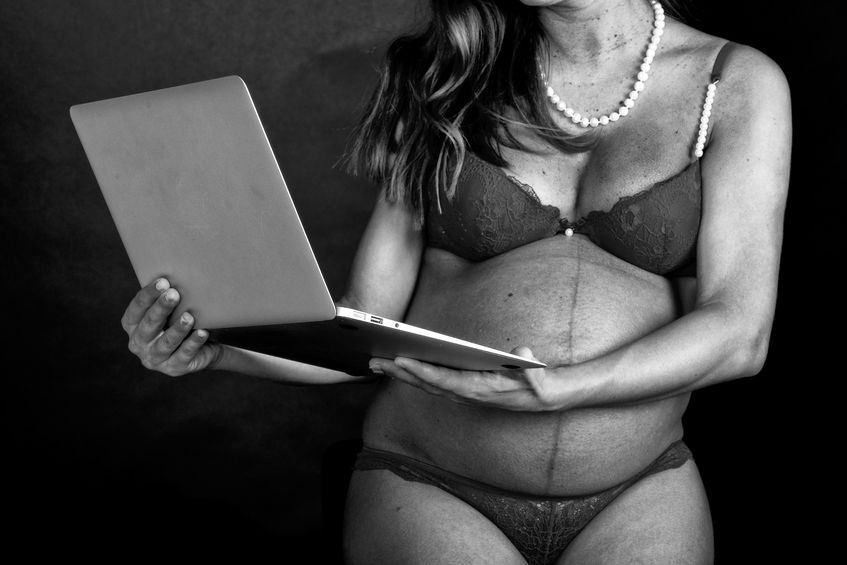
Women report sleep disorders much more often than men. This is mostly due to hormonal changes they undergo during adolescence, pregnancy and menopause which affect their whole body and sleep. The most frequent and varied sleep issues are observed during pregnancy. How exactly are pregnant women affected and how to deal with that?
Sleep is a complex physiological process and pregnancy is a state of “altered physiology” during which changes in the functioning of numerous systems and organs occur. They result in particular from the deregulated daily cycle of hormones secretion. This, in turn, has a huge impact on women`s rest: estrogens shorten REM stage, and progesterone – as a sleep promoting hormone – increases the need take naps and rest. During the first trimester, where the body works extremely hard to protect and nourish the developing baby, women tend to sleep much longer but at the same time less effectively. Oxytocin should also be mentioned when considering the hormonal regulation of sleep during pregnancy. Its peak secretion takes place at night but it has a negative impact on effective sleep since it causes systolic functions which intensify the disintegration of the stages of sleep. That is not all, however.
FIRST TRIMESTER
During the first trimester of pregnancy sleep disorders are extremely common and are caused by:
- increased urination – kidneys must be very efficient to filter more blood,
- naps during the day – increased production of progesterone causes sleepiness regardless of the time of the day, and
- changing body – it is hard to find a suitable and comfortable position.
SECOND TRIMESTER
During this time many pregnant women feel much better and are often seen as truly radiant. It is because of hormones which become more stable. In fact, their levels are still growing but now much slower than previously. The positive change is also due to the baby moving slightly higher in the womb which is better for the bladder and reduces the need to use the toilet so often.
THIRD TRIMESTER
After a short period of rest in the second trimester the time of intensified sleep problems comes again. This is mostly due to a frequent waking up and the shortening of deep sleep, i.e. the third stage of NREM. In addition, the third trimester is associated with a number of reasons for sleep quality decrease:
- inability to find the right position – it is hard to find a perfect sleep position with the belly,
- leg cramps and back pains,
- heartburn,
- shallow breath and
- tired leg syndrome.
Effective struggle with adversities
Unfortunately, efforts to relieve sleep issues are a strenuous testing of various individual solutions. First of all, one should take care of – often underestimated – sleep hygiene. Although it is a commonly known practice we rarely take it seriously and with due attention. Its most important elements include:
- proper darkening and silencing of the bedroom,
- regular getting up at the same time – also on weekends,
- avoiding activities other than sleep (and sex) in bed – no TV, no emails or Internet,
- ensuring the proper air humidity and temperature around 21 °C.
If the bedroom is already well prepared now it is the time to make the bed and ensure a good position during sleep. In the first trimester it is a bit easier because there are no medical contraindications of sleeping in favourite position; even in prone position. It changes later during pregnancy because it is not advised to sleep on the back and right side due to the risk of compression of the inferior vena cava. It is surely hard to fully relax in bed with such restrictions. In this case a specialised pillow may be some help. Recently the so-called “sensory snakes” have gained particular popularity. They can be adapted even to the most specific body positions to create a comfortable support for the head, back and belly. It eliminates neck, back and spine pains which can be particularly nuisant in the last trimesters. Later on, such snake-pillow will be also an excellent support for mother and her baby during feeding. After some time, when the baby becomes more aware of its body and environment, the sensory snake may be a perfect tool for playing and developing motor skills. It also helps children in school age to better concentrate and organise their behaviour. Just put it on the neck and its weight will stimulate deep feeling receptors in the muscles, joints and tendons.
You can find more information about the effective sleep at: http://gravityblankets.co.uk/category/blog/.




